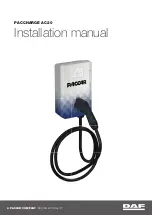
High Speed Operation
{
CAUTION:
Driving at high speeds, 100 mph (160 km/h) or
higher, puts an additional strain on tires.
Sustained high-speed driving, causes
excessive heat build up and can cause sudden
tire failure. You could have a crash and you or
others could be killed. Some high-speed rated
tires require inflation pressure adjustment for
high speed operation. When speed limits and
road conditions are such, that a vehicle can be
driven at high speeds, make sure the tires are
rated for high speed operation, in excellent
condition and set to the correct cold tire
inflation pressure for the vehicle load.
If you will be driving your vehicle at speeds of 175 mph
(282 km/h) or higher, where it is legal, set the cold
inflation pressure to the maximum inflation pressure
shown on the tire sidewall, or 38 psi (265 kPa),
whichever is lower. See the example following. When
you end this high-speed driving, return the tires to
the cold inflation pressure shown on the Tire and
Loading Information label. See Loading Your Vehicle on
page 4-32.
Example:
You will find the maximum load and inflation pressure
molded on the tire’s sidewall, in small letters, near
the rim flange. It will read something like this: Maximum
load 690 kg (1521 lbs) 300 kPa (44 psi) Max. Press.
For this example, you would set the inflation pressure for
high-speed driving at 38 psi (265 kPa).
Racing or other competitive driving may affect the
warranty coverage of your vehicle. See your warranty
booklet for more information.
5-60
Summary of Contents for 2005 Corvette
Page 5: ...These are some examples of symbols that may be found on the vehicle v ...
Page 6: ... NOTES vi ...
Page 15: ...Put someone on it Get it up to speed Then stop the vehicle The rider doesn t stop 1 9 ...
Page 126: ... NOTES 2 68 ...
Page 129: ... NOTES 3 3 ...
Page 130: ...Instrument Panel Overview 3 4 ...
Page 222: ... NOTES 3 96 ...
Page 260: ... NOTES 4 38 ...
Page 368: ...Engine Drive Belt Routing 6 14 ...
















































